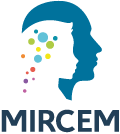List, inform
advise, propose
MULTIPLE SCLEROSIS IN CHILDREN
Multiple sclerosis (MS), a neuro-inflammatory disease involving the brain white matter, could affect children. Although MS is frequent in adults, it remains a rare entity in children and new therapies are currently available for them.
MS, a neuro-inflammatory disease
Some cells called white blood cells in our body protect us against infectious agents (bacteria, virus) that can affect us. Among them, T and B lymphocytes when activated by these agents, stimulate other cells and produce substances such as cytokines, chemokines : this chain of reactions is called an inflammation. The ultimate goal of this reaction is to destroy the agent responsible for this activation and it will establish ultimately a control system that will stop the inflammation, which depends on the type of cytokines and chemokines that are secreted. In MS, inflammation starts for reasons that are still unknown. The cells that should protect us attack our own body, and especially against the myelin. Such destruction leads to MS symptoms.
The myelin
The central nervous system is composed of neurons that enable us to think, make gestures of everyday life. Neurons transmit informations at an extremely high speed trough a “cable” called axons thanks to a discontinuous sheath called the myelin sheath. The latter is produced in the central nervous system by cells called oligodendrocytes. The destruction of the myelin sheath causes symptoms in MS. These symptoms are usually transient for few days and sometimes they may be permanent, which will lead to a disability.
For more information, please visit the National Diagnostic and Care Protocols (PNDS) : Multiple Sclerosis in Children
Causes of disease
MS is a multifactorial disease which means that there are many factors which could be responsible. In general, the role a genetical, viral and/or environemental factors have been suggested.
- Genetical factor
In 6 to 8% of patients with childhood MS, a family history of MS have been reported. Family members of the patients have higher risks of developing the disease than the general population. The half-brothers or sisters of children have half the risk of real brothers and sisters, to develop the disease while the adopted brothers and sisters have the same risk as the general population. These results suggest that genetical factors are involved in the risk of disease occurrence in an individual. On the same time, the risk of the disease occurrence in monozygotic twins if one is affected is only 30% suggesting that genetics alone cannot explain the occurrence of the disease.
- The infectious factors
A previous episode of an infectious disease or a seasonal factor has been reported only in 29% of children and at present, no pathogen has been incriminated in the occurrence of this disease. Some viruses such as EBV have been suspected but without real evidence.
- Vaccination
Numerous studies assessed the possible association between an increased occurrence of MS in adult and immunization with the recombinant vaccine against hepatitis B (HB). No significant increase in the incidence of MS in the short (within 2 months) or long (> 1 year) term after immunization have been observed in cohort studies or case-controls. However, some studies in adults have reported a significantly increased risk of MS within 3 years after vaccination, suggesting that prolonged periods of risk must be assessed. Recent studies in our centre showed that immunization against hepatitis B does not increase the risk of progression to MS and do not appear to increase the risk of occurrence of a first episode of MS in childhood.
- Passive smoking
The possibility of a relationship between active smoking and the occurrence of MS is high in adults and it has been shown that children exposed to parental smoking have a higher risk of having MS, a risk depending on the duration of exposure to passive smoking.
Clinical manifestations
MS clinical symptoms can affect different parts of the body (dissemination in space), that is to say several brain regions can be affected at the same time: a child may have gait difficulties, impaired motor skills and/or visual disturbances. Clinical symptoms can relapse sometimes affecting other regions of the brain, thus confirming the dissemination in time. There are some specific clinical symptoms of MS on which one need to be careful, the most common being the long tract dysfunction.
SOME PARTICULAR CLINICAL SYMPTOMS
Evidence of the disease
Brain and spinal MRI
The MRI is the key for the diagnosis. Mikaeloff et al have identified prognostic factors for recurrence:
- lesions perpendicular to the long axis of the corpus callosum
- well-defined lesions.
The presence of these lesions is predictor of a relapse.
Lumbar puncture
Lumbar puncture is informative when it shows a moderate inflammatory reaction and/or an intrathecal synthesis of oligoclonal bands of IgG that is present in 45% to 64% of patients with MS.
Oligoclonal bands are now included in the McDonald 2017 MS diagnostic criteria, validated in paediatric cohorts.
Evolution
There are three kind of clinical course in MS : a relapsing remitting, progressive and secondary progressive course. In children, the relapsing-remitting course is the most frequent: clinical symptoms appear and heal without sequelae. In the progressive course, a clinical disability may occur and worsen with time. Only 9 out of 197 children with MS in France showed a progressive form, in the Kidsep cohort. When a relapsing remitting course evolves towards a progressive course, it is called a secondary progressive course. Renoux et al showed that childhood MS evolves towards a secondary progressive course 10 years later than in adult, but the age of onset is 10 years earlier.
The main concern in this disease is to determine the risk of disability and relapses and sometimes these two factors may be involved.
Handicap
There are 4 prognostic factors of disability in children: the number of attacks (which is a time-dependent variable), presence of sequelae after the first attack, polysymptomatic form and a progressive course.
Furthermore, Mickaeloff et al described a severity score, the Kidsep score. This score is calculated at the 2nd attack and predicts the probability of no recurrence or absence of progression to an EDSS score > 4. The prognostic factors of severity which are used to calculate the score are:
– Female gender
– The occurrence of a second attack <1year
– Absence of alteration of consciousness
– A progressive course
– MRI criteria of recurrence: well limited lesions and/or lesions perpendicular to the long axis of the corpus callosum. To calculate, the value of each factor is multiplied between them and the result is then compared to 4 quartiles with decreasing probability of no recurrence or absence of progression to an EDSS score > 4. For example, a score of 8.19 is close to the fouth quartile, which represents a probability of no recurrence or absence of progression to EDSS 4 of 10%. This score needs to be validated.
Treatment
Attacks are treated with high doses of IV methylprednisolone (steroids). Immunomodulatary treatments such as Interferon b (1a or 1b) or glatiramer acetate (Copaxone) are now been proposed in children with MS with safety, tolerance and efficacy similar to adults. Immunosuppresive treatments such as cylcophosphamide or natalizumab could also be used in children with a severe form of MS with caution. Discussion on the use of oral therapies in children is actually ongoing.
Monitoring
Brain and spinal MRI
Regular clinical and paraclinical monitoring (blood tests, MRI…) by the attending physician and/or pediatric neurologist/neurologist is strongly recommended in order to follow disease progression.









